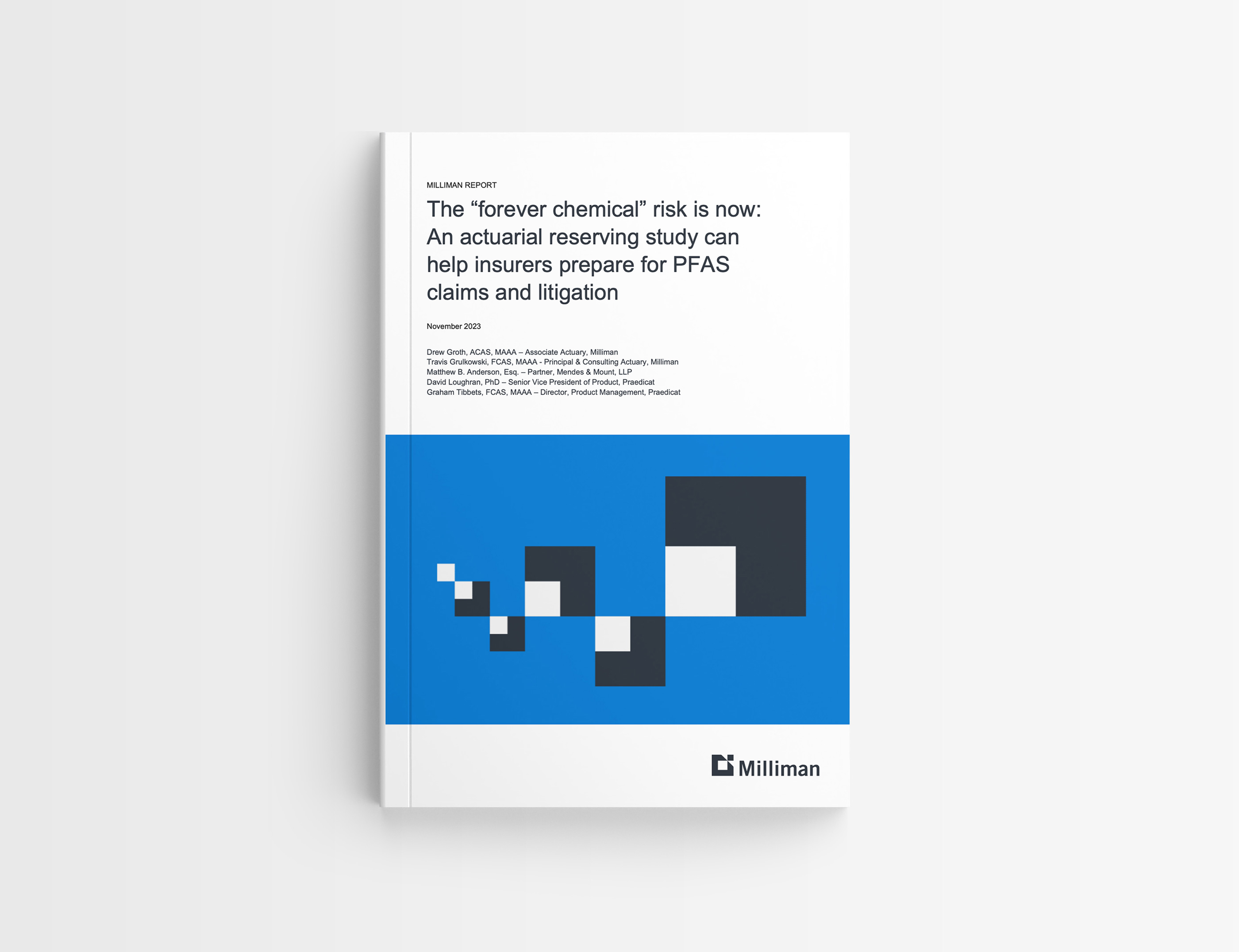誰がPFAS訴訟に直面しているのか、保険会社はPFASの請求額をどのように予測するのか?
以下では、現在のPFAS訴訟の状況を調査し、保険会社がPFASの賠償責任を見積もる手助けとなる数理的準備金積立手法を提供するミリマンのこの新しい調査についてまとめます。
最近の和解金額など、詳細は、レポート全文をご覧ください。
Who's facing PFAS litigation—and how can insurers anticipate PFAS claims?
Below, we summarize our new research, which examines the current PFAS litigation landscape and offers actuarial reserving methodology that can help insurers estimate their PFAS liability.
See the full report for more details, including recent settlement amounts.
PFAS litigation at a glance
9,800+
suits filed since 1999 alleging harm from PFAS exposure
140
industries facing litigation
$16.7 billion
settlements so far—and expected to substantially grow

Why insurers' PFAS exposure is emerging now
Over the past 20 years, more than 10,000 peer-reviewed studies have explored the connection between PFAS and physical harm. Although the science remains far from settled, this expanding body of research has prompted the surge in litigation.
It has also meant more data—a key detail enabling actuaries and insurance companies to quantify potential PFAS claims with more precision.
New actuarial reserving methods help estimate insurers' PFAS risk
An insurer's PFAS exposure can be difficult to quantify because of the lack of historical data, ongoing litigation, and nascent science. Traditional actuarial approaches for estimating insurance reserves are ineffective, as are many methodologies tailored for asbestos, pollution, and health hazard risks.
But an insurance company's PFAS risk can be estimated using stochastic modeling and other specialized actuarial techniques discussed in our research.
Next steps for insurance companies expecting PFAS claims
Some insurers have begun to develop early PFAS reserves. But many firms have done so only in response to litigation, not proactively.
Working to quantify PFAS reserves today allows insurers to produce an actuarially sound reserve estimate. Starting now can help insurance companies make vital decisions that will prepare them for future PFAS risks—so the uncertainty surrounding these chemicals doesn't last forever.
Learn more about preparing for PFAS claims and litigation

About the authors
Matthew B. Anderson, Esq.
Matthew B. Anderson, Esq., is a partner at the law firm of Mendes & Mount LLP. For over 20 years, Matt has represented his insurer clients in complex ligation cases including coverage disputes involving underlying PFAS bodily injury and property damage claims.
Travis Grulkowski, FCAS, MAAA, and Drew Groth, ACAS, MAAA
Travis Grulkowski, FCAS, MAAA, is a principal and consulting actuary at Milliman with more than 25 years of experience, and Drew Groth, ACAS, MAAA, is an associate actuary at Milliman with more than a decade of experience. Throughout their tenures at Milliman, Travis and Drew have worked closely with primary insurers, reinsurers, and corporate entities to produce reserve estimates for various latent exposures, including PFAS, asbestos, pollution, sexual misconduct, talc, glyphosate, and other health hazards. Their estimates have been used to book reserves, as well as support the buyers and sellers in transactions involving legacy liabilities.
Connect with Travis
Connect with Drew
David Loughran, Ph.D., and Graham Tibbets, FCAS, MAAA
David Loughran, Ph.D., is senior vice president, product and Graham Tibbets, FCAS, MAAA, is director, product management at Praedicat, Inc., a liability emerging risk analytics company offering data and models to insurers and corporate clients to help them manage exposure to PFAS and myriad other sources of systemic risk.